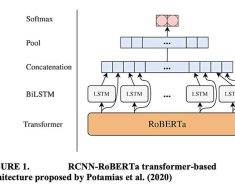The Game-Changing Concept of In-Context Learning
One of the most significant advancements in the domain of artificial intelligence (AI), natural language processing (NLP), and machine learning is the introduction of In-Context Learning. This innovative technique has revolutionized the way large language models (LLMs) understand and interpret language, allowing them to dynamically learn and refine their knowledge in specific contexts in real-time. The Retrieval-Augmented Generation (RAG) technique is a popular method used for in-context learning, which retrieves a set of relevant supporting text from a given source document.
Advancements in Information Retrieval
Over the years, the RAG technique has evolved from simple keyword-based extraction to more intricate and knowledge-intensive tasks. This evolution has led to improved results in various benchmarks. The system comprises several components including a Knowledge Base, Vector Store, Retriever, Ranker, and Generator. Utilizing open-source libraries, the system can generate accurate and reliable responses based on factual correctness.
The Convergence of AI, NLP, and Machine Learning
The synergistic integration of AI, NLP, and machine learning has brought about a significant transformation in language processing technologies. Machines can now understand and respond to human language with enhanced accuracy and context. NLP, a subfield of AI, blends linguistic and computational technology to augment machines’ ability to understand and generate human language. Machine learning algorithms are integral to training NLP systems on extensive text datasets. Techniques like recurrent neural networks (RNNs) and transformers have substantially improved the semantic understanding and language generation capabilities of NLP systems.
The Role of Large Language Models
LLMs form the backbone of NLP and NLG tasks. These machine learning models process text as input and yield a range of outputs including text, code, numbers, tables, or diagrams. An alternative method for training pre-trained models, called meta-learning, was proposed in 2022. This approach enables models to learn from a wide array of examples during the training process. By combining meta-learning and in-context learning, model accuracy increases with the provision of more examples. Models with more parameters and detailed prompts perform more efficiently.
Applications and Limitations of LLMs
LLMs have a broad spectrum of applications, from automating processes and driving personalization to analyzing large amounts of data. They are used in various fields including search engines, customer service, sentiment analysis, market research, healthcare, legal research, and machine translation. Despite their wide-ranging uses, LLMs do have limitations. They are constrained by the textual training data they are trained with and there is potential for presenting false information. The development process can also be resource-intensive.
The Future of In-Context Learning
With the ongoing research and advancements in the field, NLP continues to push the boundaries of language technologies, empowering machines to communicate and interact more effectively with humans. The importance of in-context learning in the field of NLP and AI machine learning is undeniable. As we continue to refine the techniques and methodologies, the future holds immense potential for the innovative use of AI and NLP in various industries.




